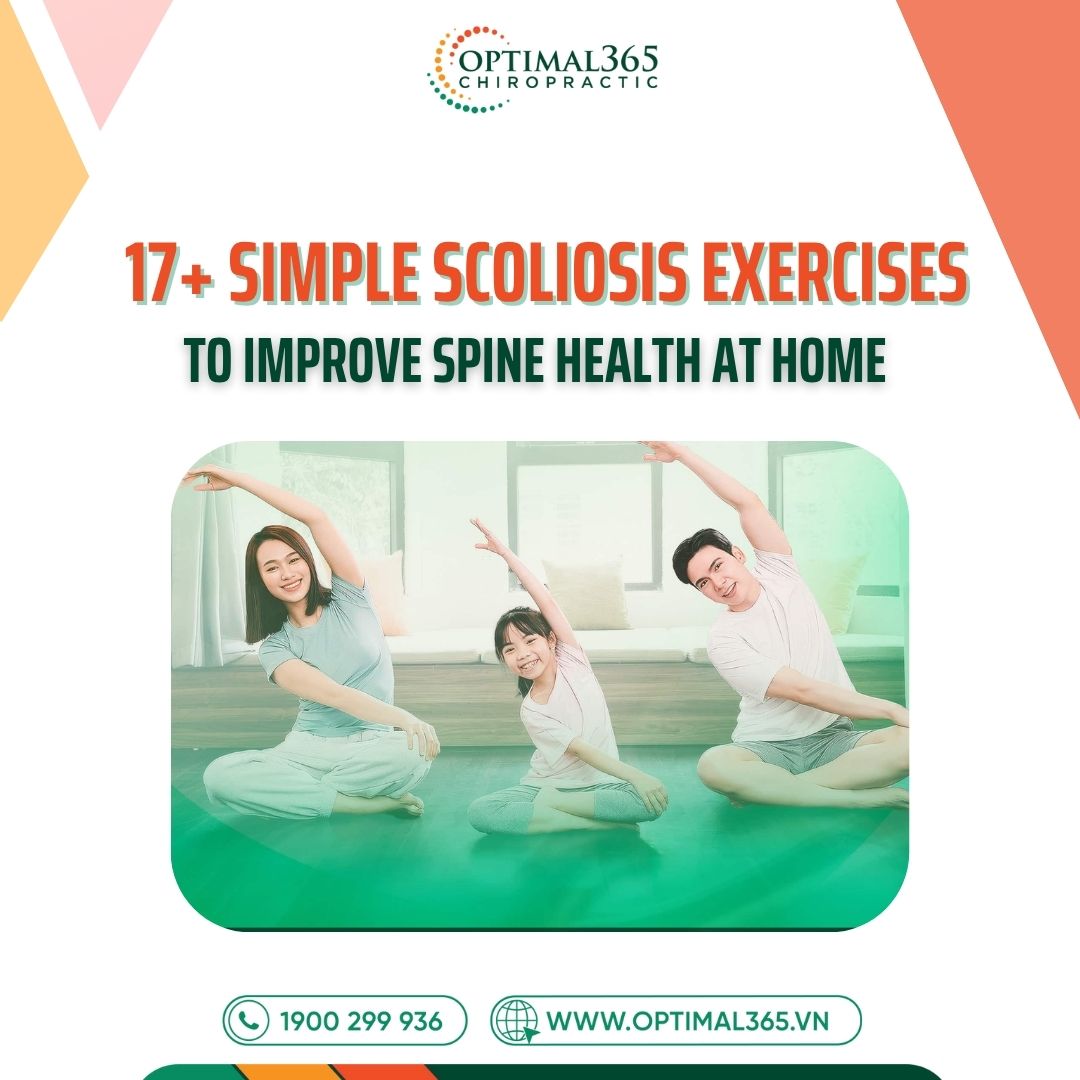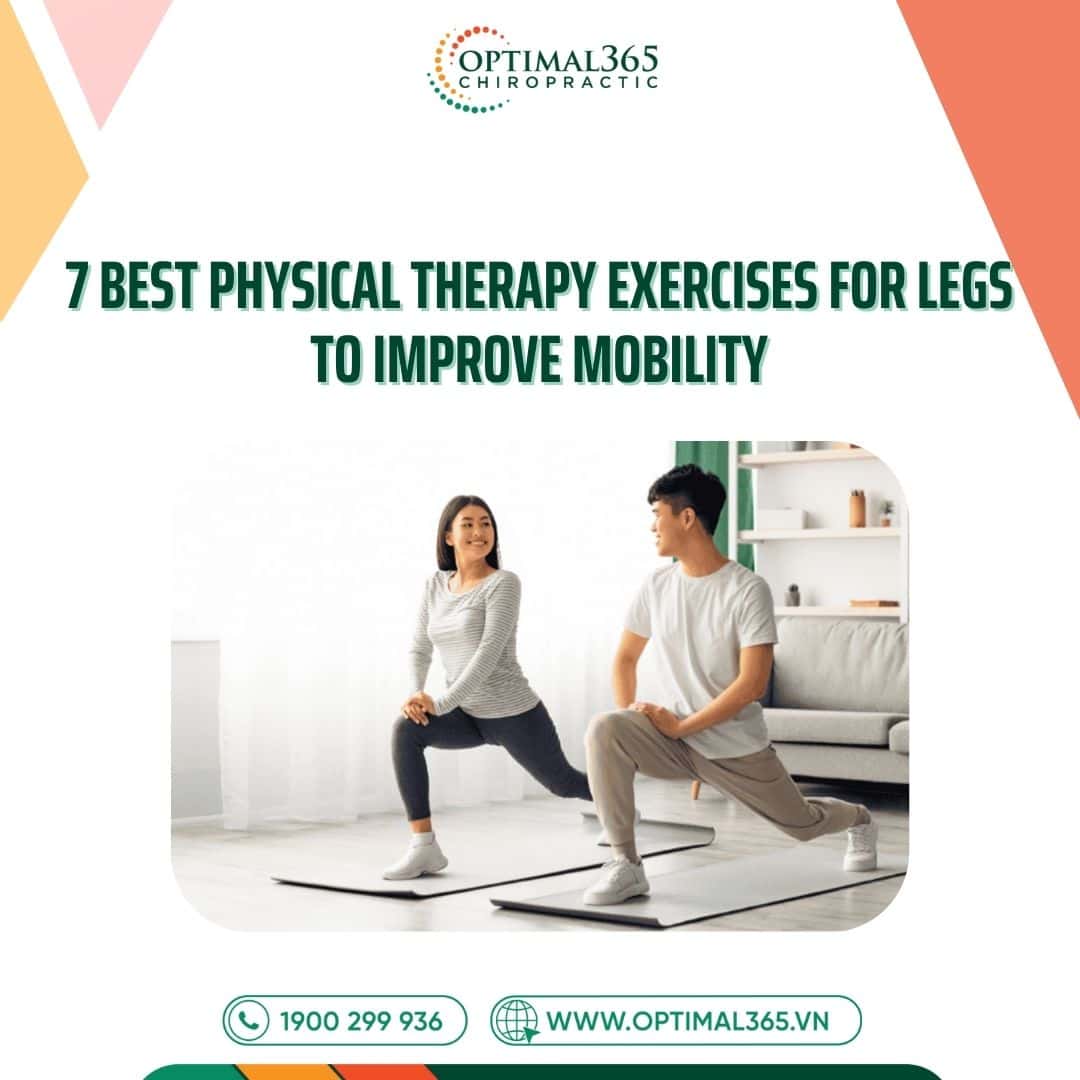Scoliosis is a condition where the spine curves sideways in a C or S shape instead of remaining straight along the back. This condition often affects the thoracic, lumbar, or both regions of the spine. To manage scoliosis effectively, physiotherapy exercises are highly recommended as a non-invasive, efficient method to improve spinal health. In this article, Optimal365 Chiropractic presents 17+ simple yet effective scoliosis exercises that you can perform at home to enhance flexibility, reduce pain, and strengthen your core.
Seated Toe-Touch Stretch
This exercise stretches the muscles and ligaments in the back and spine, promoting relaxation. It’s ideal to perform at the end of a workout session.
- Step 1: Sit with both legs extended straight in front of you, keeping your feet as close together as possible.
- Step 2: Keep your back straight and extend both arms forward.
- Step 3: Slowly lower your upper body forward, reaching to touch your toes.
- Step 4: Hold the position for 20 seconds, then return to the starting position.
Benefits: Stretches the back and spine muscles, improving flexibility.
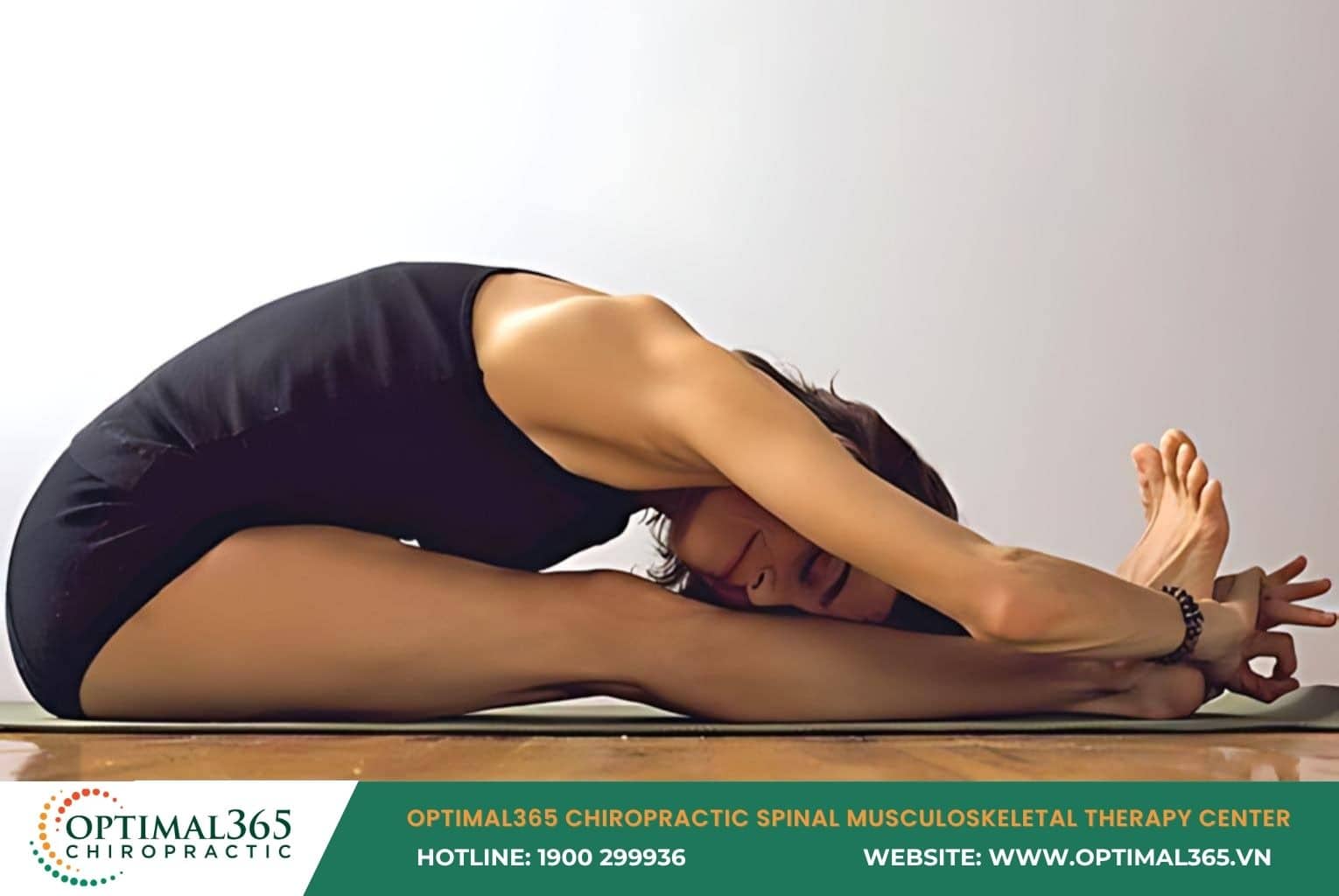
Scoliosis exercises – The toe-touch stretch helps lengthen the muscles in the back and spine
Seated Cross-Arm Twist
This exercise targets the concave side of the spinal curve, enhancing flexibility and supporting scoliosis treatment.
- Step 1: Twist your body toward the opposite side of the concave curve. Repeat 10 times.
- Step 2: Sit upright on a chair, raise the arm on the side of the lower shoulder, and grip the chair’s edge with the other hand. Hold for a few seconds before returning to the starting position.
Benefits: Improves body flexibility and stretches the concave side of the spine.
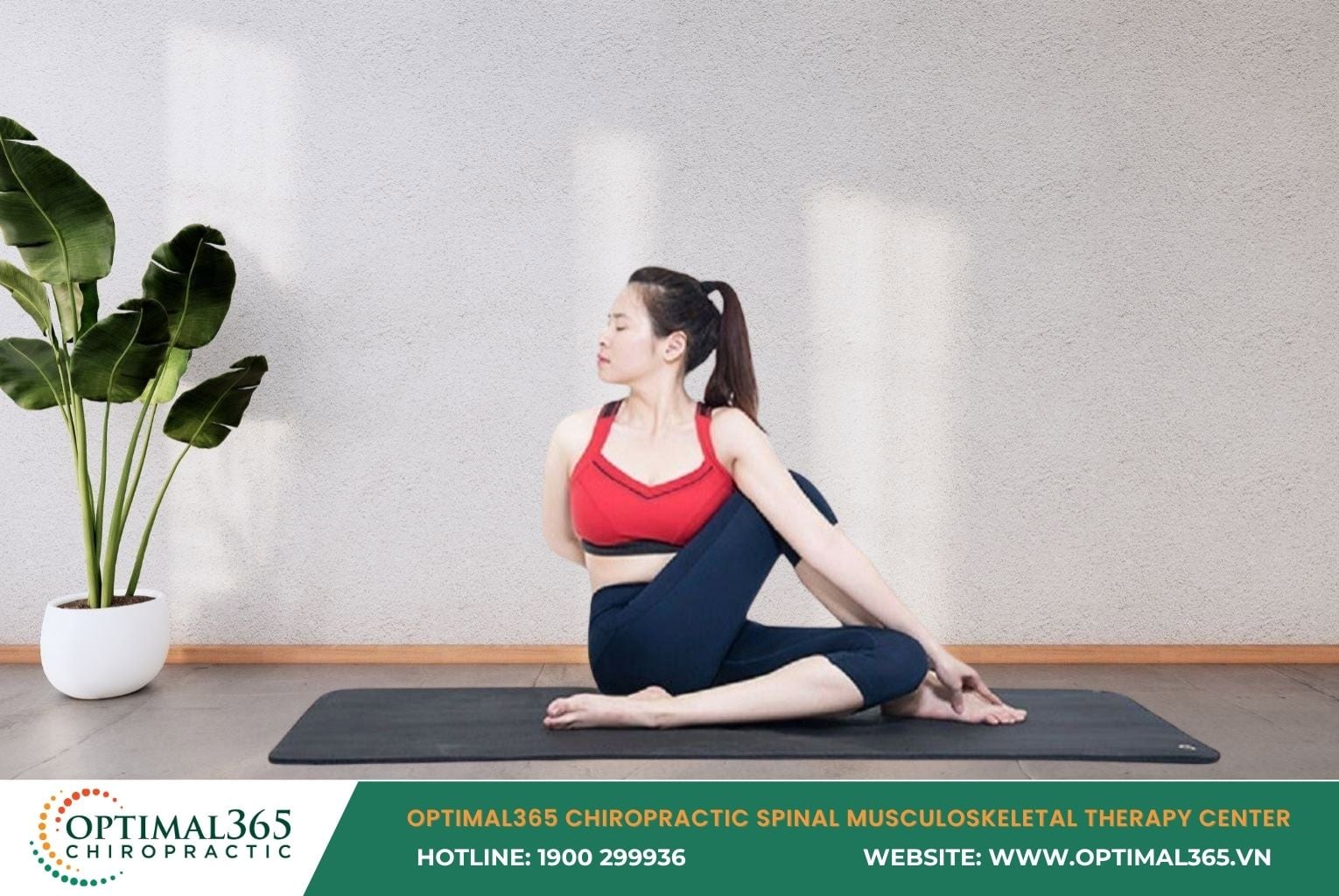
Scoliosis exercises -The seated spinal twist helps stretch the muscles on the concave side while improving overall body flexibility
Bird-Dog Balance Pose
The bird-dog exercise strengthens the core muscles, particularly the lower back, and enhances balance.
- Step 1: Start in a tabletop position (on all fours).
- Step 2: Simultaneously extend your right arm forward and left leg backward, engaging your core to maintain balance.
- Step 3: Hold for 1-2 seconds, then return to the starting position.
- Step 4: Repeat on the opposite side. Perform 10-15 reps per side.
Benefits: Strengthens core muscles and improves balance.
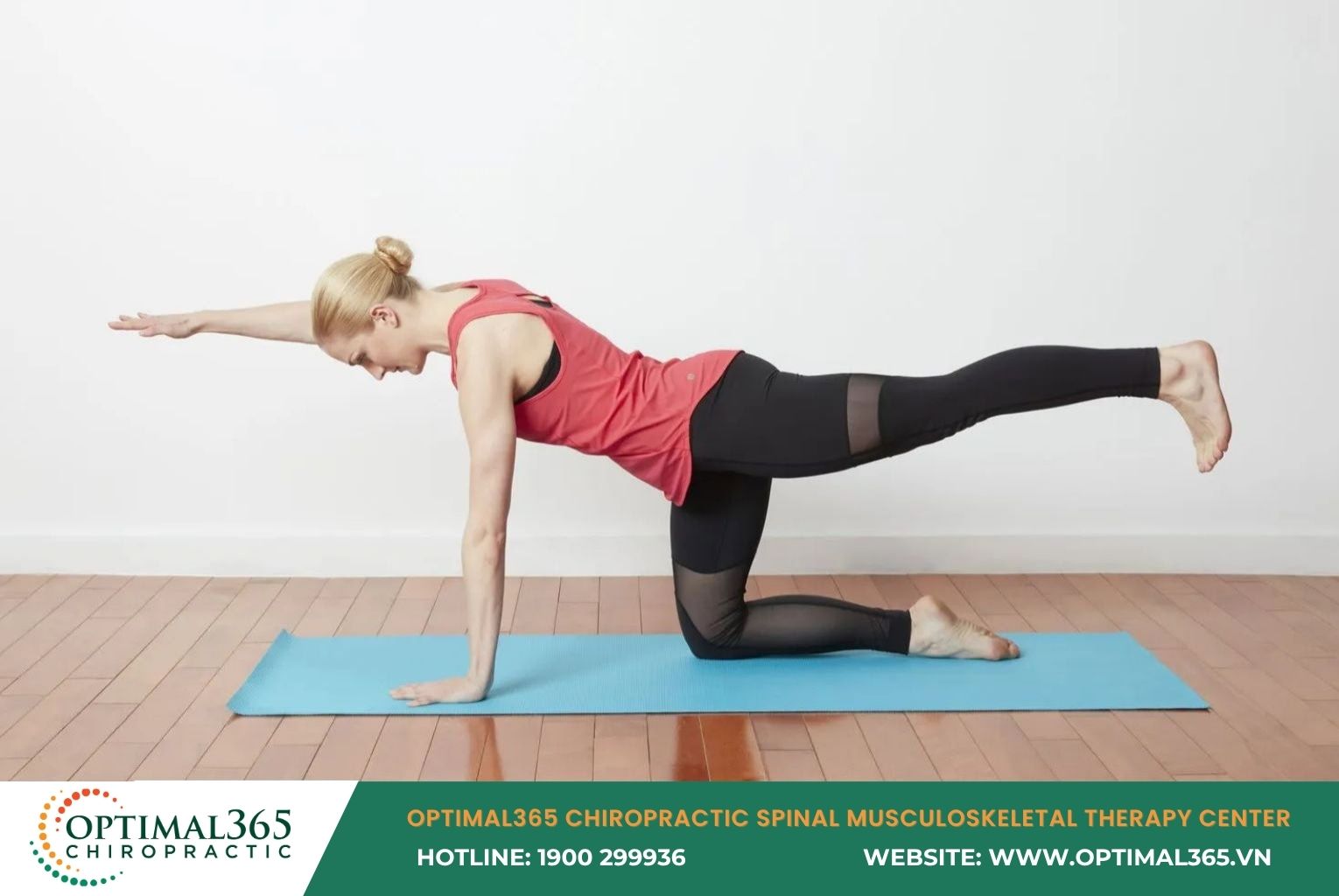
Scoliosis exercises – The bird-dog pose helps strengthen the core muscles
Seated Meditation with Arms Overhead
This exercise improves focus, blood circulation, posture, and reduces back pain.
- Step 1: Sit in a cross-legged position with the soles of your feet touching and hands resting on your thighs.
- Step 2: Hold a ball overhead and raise it straight up.
- Note: Ensure your elbows touch the wall. Repeat the movement several times.
Benefits: Enhances posture and body flexibility.
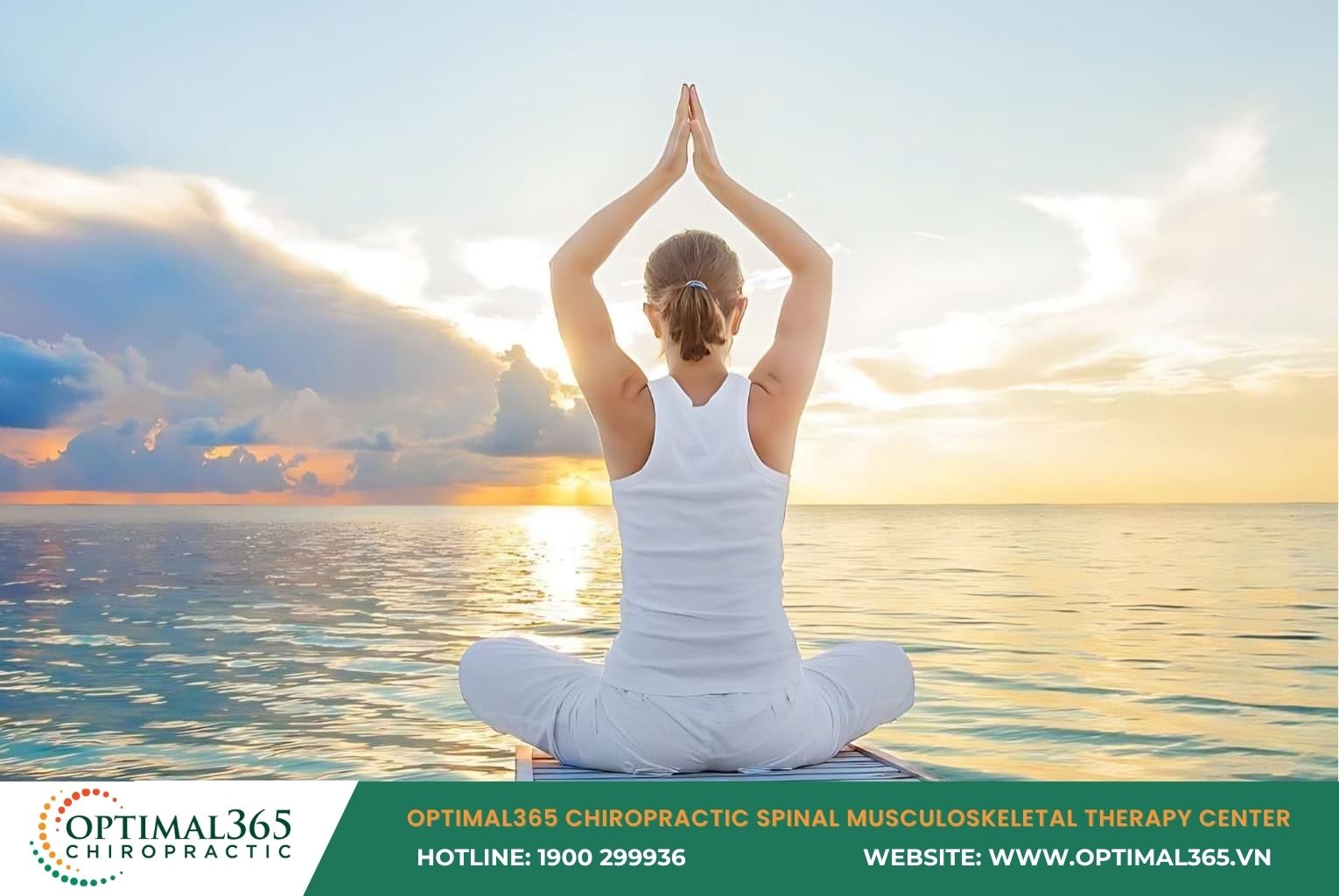
Scoliosis exercises – The seated meditation pose with arms overhead helps improve posture and body flexibility
Wall-Supported Back Stretch
This simple exercise benefits the back and pelvis, improving spinal health.
- Step 1: Stand straight with your back and shoulders pressed against a wall, keeping a hand’s width distance between your heels and the wall.
- Step 2: Press your lower back against the wall and hold for 5-10 seconds.
- Step 3: Return to the starting position and repeat 5-10 times.
Benefits: Strengthens spinal health and alignment.
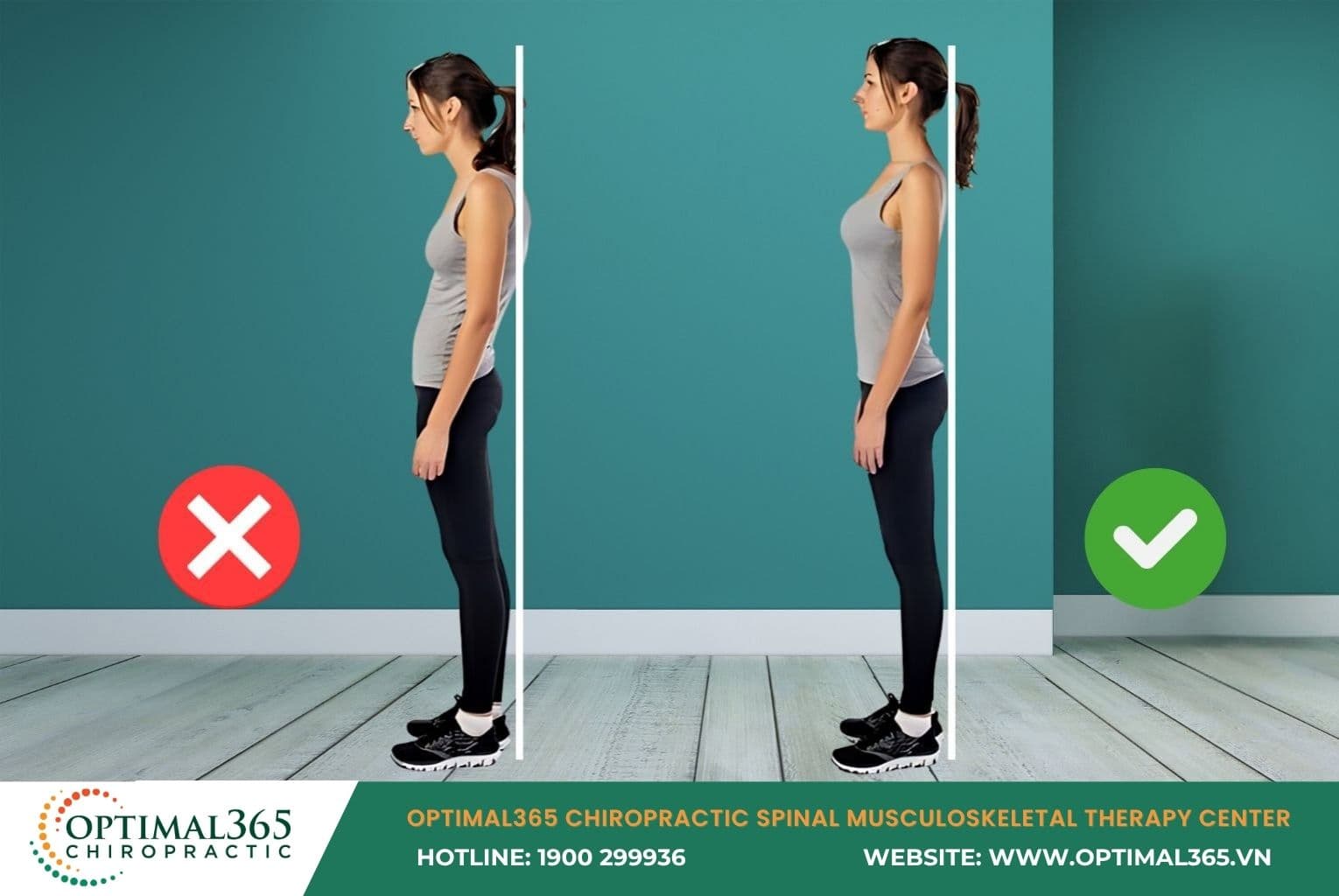
Scoliosis exercises – The wall-supported posture exercise is highly effective for improving spinal health
Deep Breathing While Seated
This exercise reduces stress, improves respiratory function, and enhances blood circulation.
- Step 1: Place a pillow behind your back and lean back in a half-sitting, half-lying position. Place your hands below your diaphragm to feel your breathing.
- Step 2: Inhale deeply, then exhale slowly, focusing on lengthening each breath. Repeat 10 times.
Benefits: Improves breathing and circulation while reducing stress.
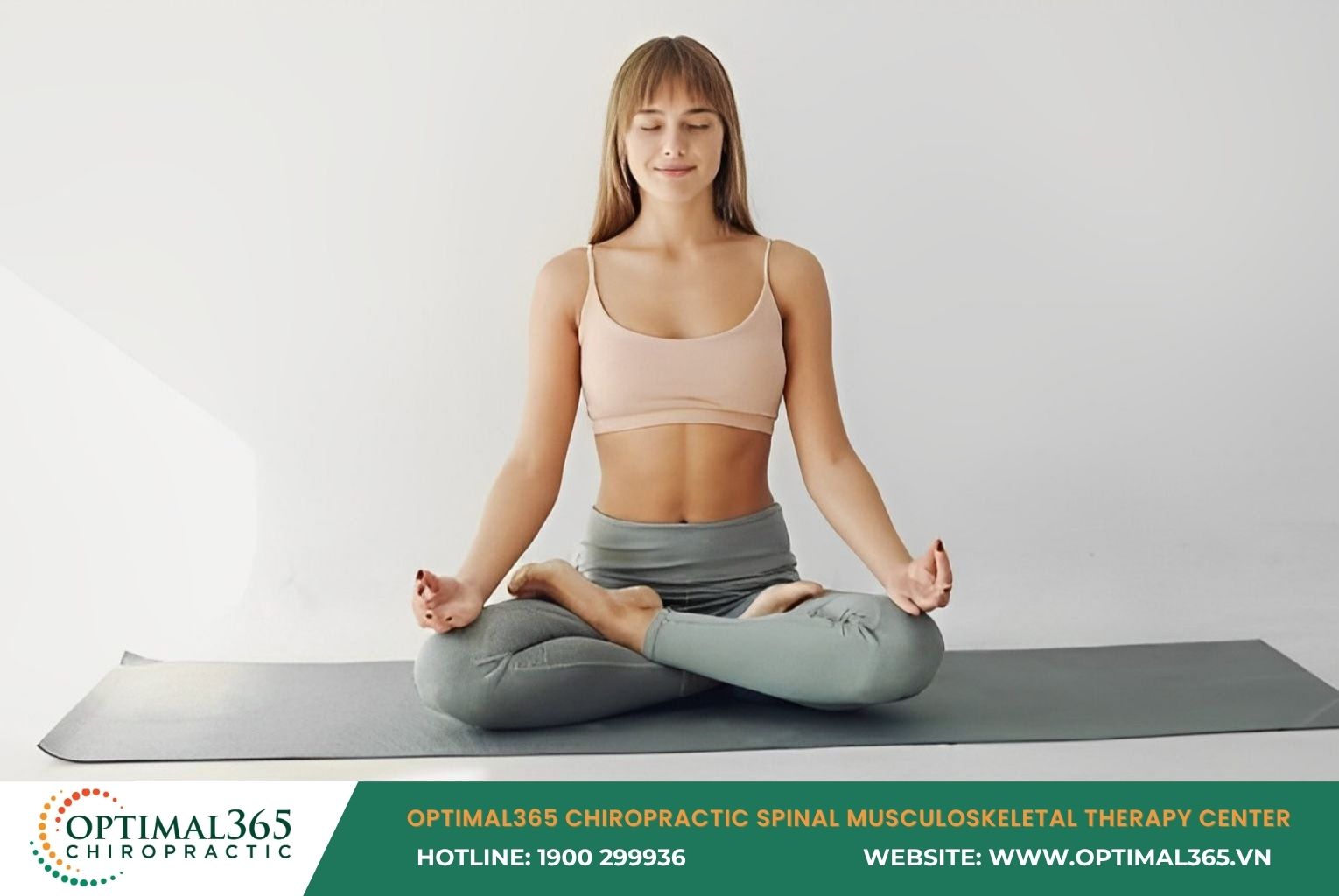
Scoliosis exercises – The seated deep-breathing exercise boosts respiratory efficiency and increases blood flow
Bridge Pose
The bridge pose strengthens the lower back, hips, and spine.
- Step 1: Lie on your back with knees bent and feet flat on the floor, hip-width apart.
- Step 2: Push your hips upward, keeping your feet grounded. Engage your core and glutes.
- Step 3: Hold for 1-2 seconds, then lower your body.
- Step 4: Repeat 5-10 times, 1-2 times daily.
Benefits: Enhances lower back and core strength.
Superman Pose
This exercise strengthens the lower back, glutes, and abdominal muscles.
- Step 1: Lie face down on a mat with your forehead lightly touching the floor.
- Step 2: Extend both arms and legs outward to form a V shape.
- Step 3: Lift both arms and legs off the ground, engaging your core.
- Step 4: Hold for 2 seconds and repeat 15-20 times.
Benefits: Strengthens the lower back, glutes, and core.
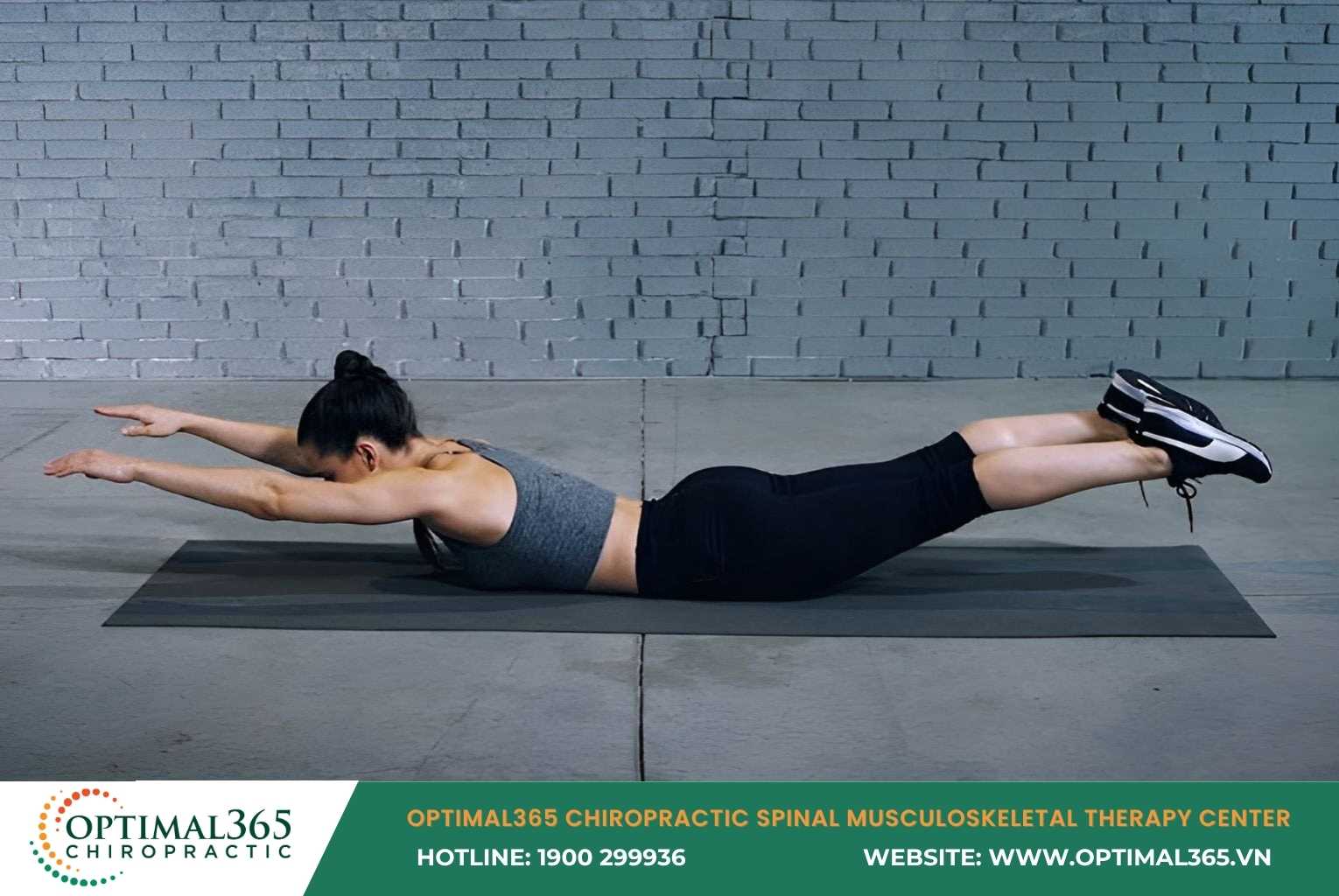
Scoliosis exercises – Practicing the Superman pose helps build strength in the lower back, glutes, and core
Plank for Scoliosis
The plank strengthens core muscles, particularly the transverse abdominis, and is easy to perform at home.
- Step 1: Lie face down, place elbows under shoulders, and lift your body by tucking your toes or resting on your knees.
- Step 2: Align your body in a straight line from shoulders to hips.
- Step 3: Engage your core and hold for at least 30 seconds.
Benefits: Strengthens core muscles for better spinal support.
Cat-Cow Pose
The cat-cow pose prevents back pain and improves spinal flexibility.
- Step 1: Start on all fours with hands under shoulders and knees under hips.
- Step 2: For the cat pose, arch your back upward, tucking your pelvis and engaging your core. Hold for 1-2 seconds.
- Step 3: For the cow pose, lift your hips and lower your back, holding for 1-2 seconds.
- Step 4: Repeat 5-10 times.
Benefits: Reduces back pain and enhances flexibility.
Latissimus Dorsi Stretch
This exercise relieves tension in the latissimus dorsi muscle, improving posture and flexibility.
- Step 1: Stand with feet shoulder-width apart and knees slightly bent.
- Step 2: Raise both arms overhead, with your left hand grasping your right wrist.
- Step 3: Lean to the right until you feel a stretch on your left side.
- Step 4: Repeat on the opposite side. Perform 5-10 reps per side.
Benefits: Relieves muscle tension and improves posture.
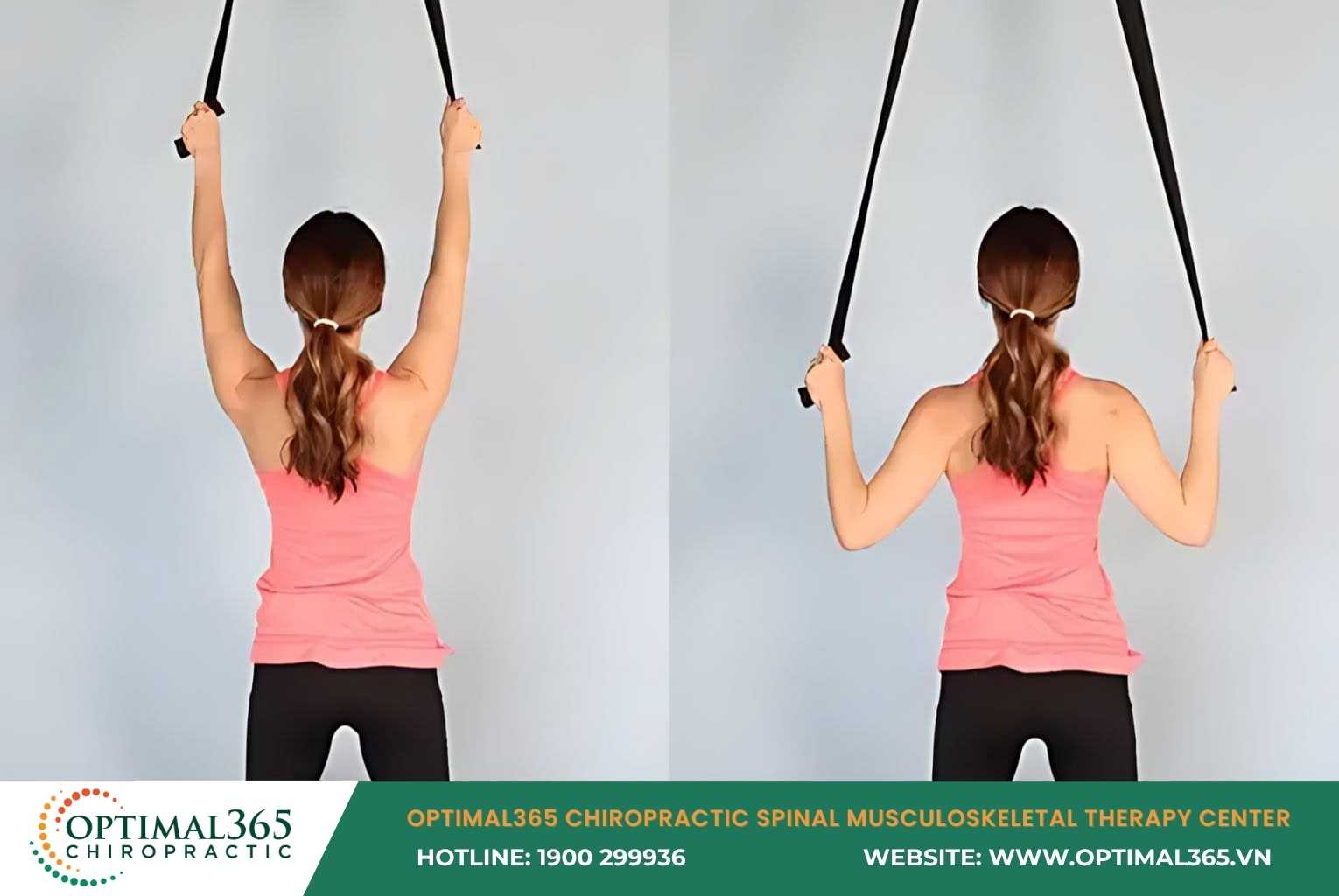 Scoliosis exercises – Scoliosis creates muscle imbalances that result in back stiffness and tension
Scoliosis exercises – Scoliosis creates muscle imbalances that result in back stiffness and tension
Knee-to-Chest Stretch
This exercise strengthens core muscles, supporting the hips, lower back, and spine.
- Step 1: Lie on your back in a relaxed position.
- Step 2: Lift your legs, bending your knees to a 90-degree angle.
- Step 3: Push your knees outward with your hands while engaging your core to resist the push.
- Step 4: Hold for 3 seconds and repeat 10 times.
Benefits: Enhances core strength and reduces back pain risk.
Upward-Facing Dog Pose
This yoga pose stretches the spine and aligns the vertebrae.
- Step 1: Start in a kneeling position with hands shoulder-width apart and knees hip-width apart.
- Step 2: Inhale, press into your palms, and lift your hips upward.
- Step 3: Straighten your legs as much as possible, pointing your heels downward to form an inverted V shape.
- Step 4: Hold for 3 seconds and repeat 5-10 times, 2-3 sets daily.
Benefits: Stretches the spine and relieves muscle tension.
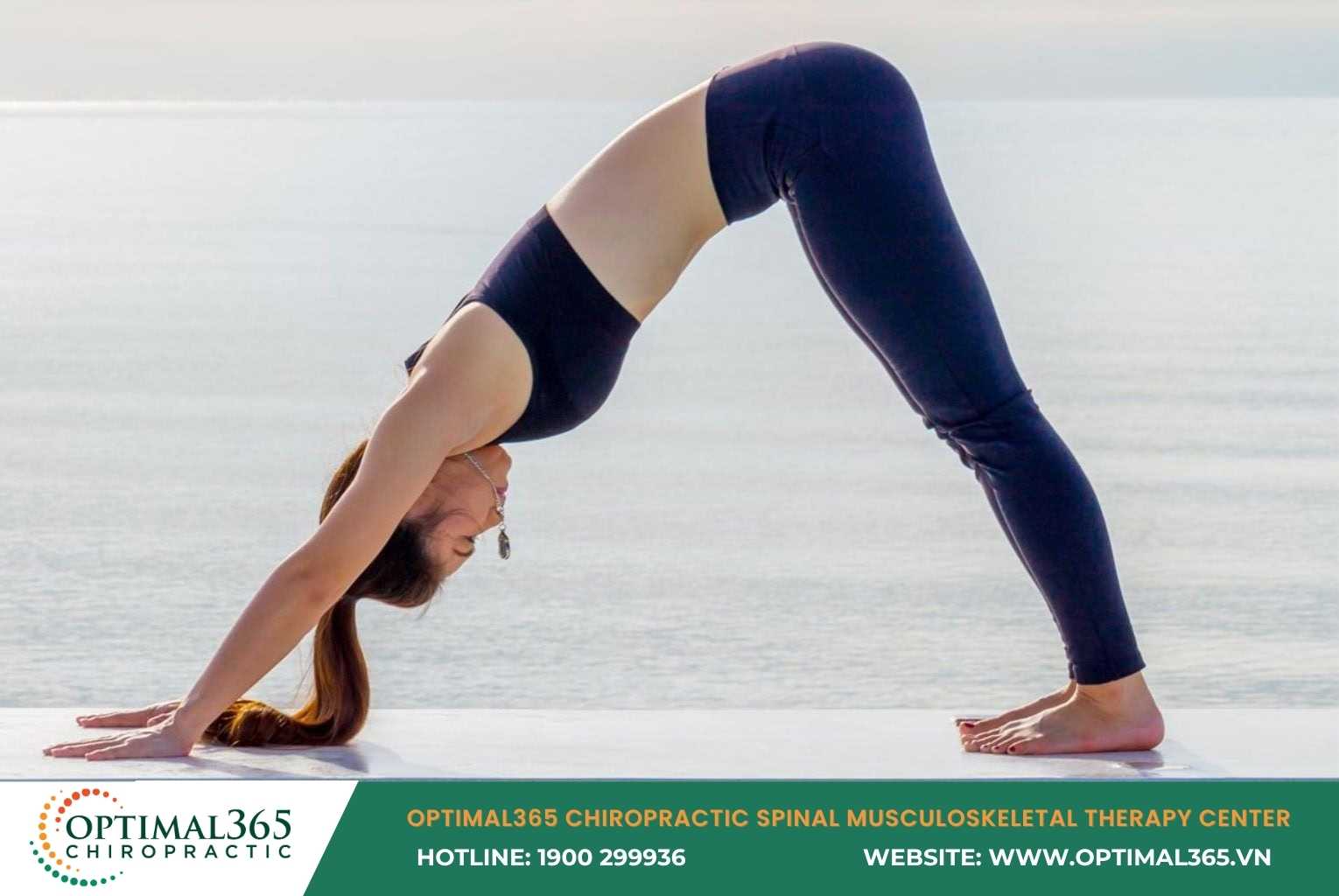
Scoliosis exercises – Practicing the downward-facing dog helps lengthen muscles and free the body from stored tension
Kettlebell Deadlift
This compound exercise strengthens the lower back and improves posture.
- Step 1: Choose a kettlebell weight suitable for your condition, guided by a professional.
- Step 2: Stand with feet hip-width apart, knees slightly bent, and core engaged.
- Step 3: Place the kettlebell in front of your feet.
- Step 4: Hinge at the hips, keeping your back straight, and lift the kettlebell using leg strength.
- Step 5: Perform the prescribed repetitions under professional supervision.
Benefits: Strengthens the lower back and aligns the spine.
Note: Consult a doctor or therapist to ensure proper technique and avoid injury.
Abdominal Crunch
This exercise strengthens the abdominal muscles, supporting the spine.
- Step 1: Lie on your back with feet flat and knees bent.
- Step 2: Keep your back relaxed and lift both legs to form a 90-degree angle.
- Step 3: Push your knees outward with your hands, then pull them back using your core.
- Step 4: Hold for three full breaths and repeat 10 times for 2 sets.
Benefits: Strengthens core muscles and improves posture.
One-Leg Meditation Pose
This pose improves spinal health, balance, and mental relaxation.
- Step 1: Stand with feet shoulder-width apart and hands on hips. Inhale deeply and lift your chest.
- Step 2: Place your right foot on your left thigh, avoiding the knee.
- Step 3: Clasp your hands and raise them overhead, keeping your spine straight.
- Step 4: Hold for a few breaths, then switch sides.
Benefits: Enhances spinal health and mental calmness.
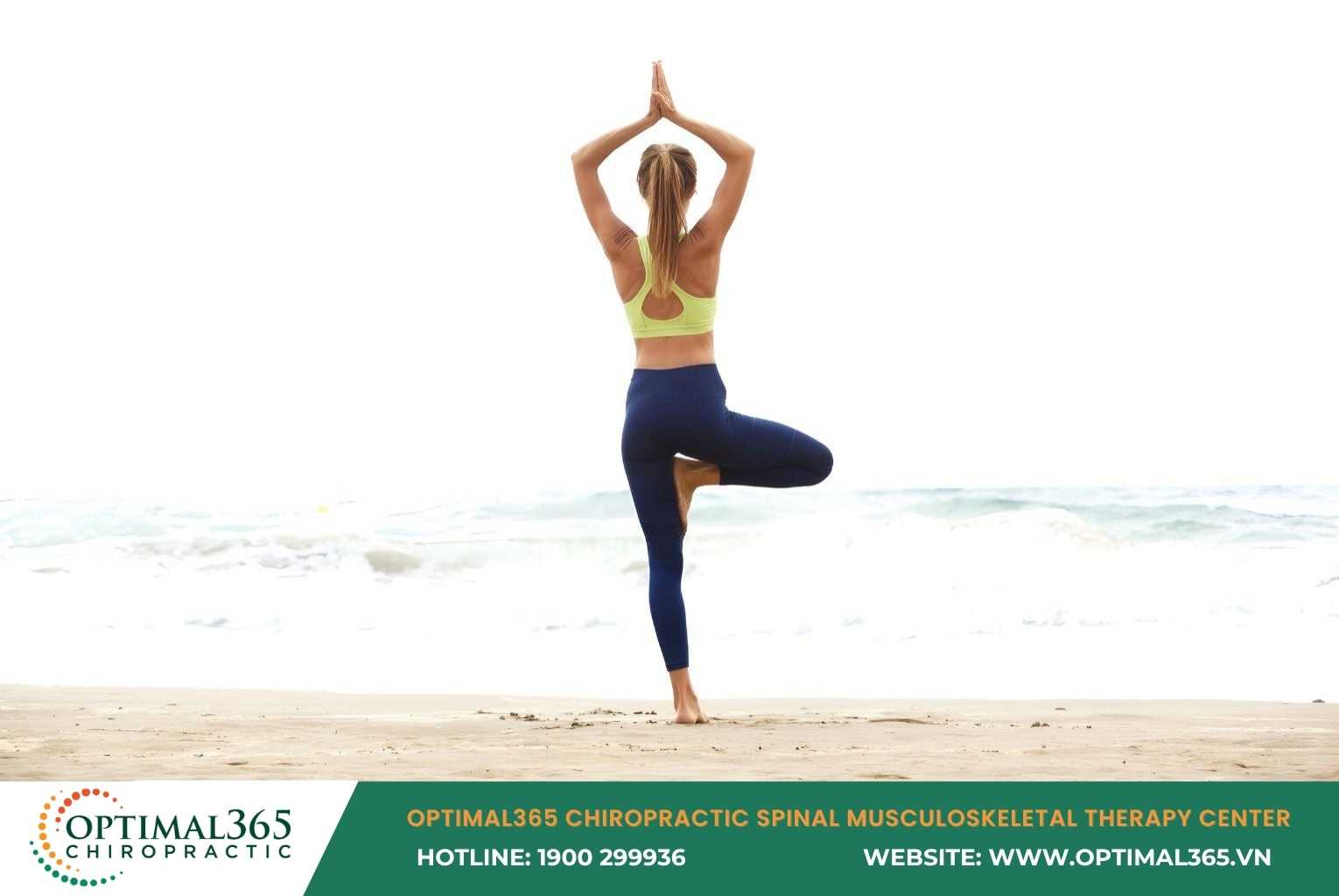
Scoliosis exercises – The tree pose helps improve spinal health and body balance
Spine Stretch with Exercise Ball
This exercise targets the curved spine, relieving tension and improving posture.
- Step 1: Kneel on a mat and place an exercise ball beside your hip, aligning it with the convex side of your spine.
- Step 2: Lean onto the ball, positioning it between your ribcage and hip.
- Step 3: Lower one arm and leg for balance, extending the other arm upward.
- Step 4: Hold for 20-30 seconds, repeating 2-3 times daily.
Benefits: Relieves spinal tension and improves flexibility.
Staircase Exercise for Scoliosis
This exercise corrects leg length discrepancies that contribute to scoliosis.
- Step 1: Stand in front of a staircase and step up with your longer leg.
- Step 2: Lower the opposite foot below the step, keeping your body upright.
- Step 3: Raise the arm on the same side as the lowered leg, keeping it straight.
- Step 4: Return to the starting position and switch sides.
Benefits: Corrects leg length imbalances and improves spinal alignment.
Prone on Exercise Ball
This exercise strengthens the spine and improves posture.
- Step 1: Kneel on a mat with an exercise ball in front of you.
- Step 2: Lean forward, resting your abdomen on the ball in a relaxed position.
- Step 3: Keep your back and limbs perpendicular to the ball.
- Step 4: Hold for 10 breaths and repeat 10 times.
Benefits: Enhances spinal strength and flexibility.
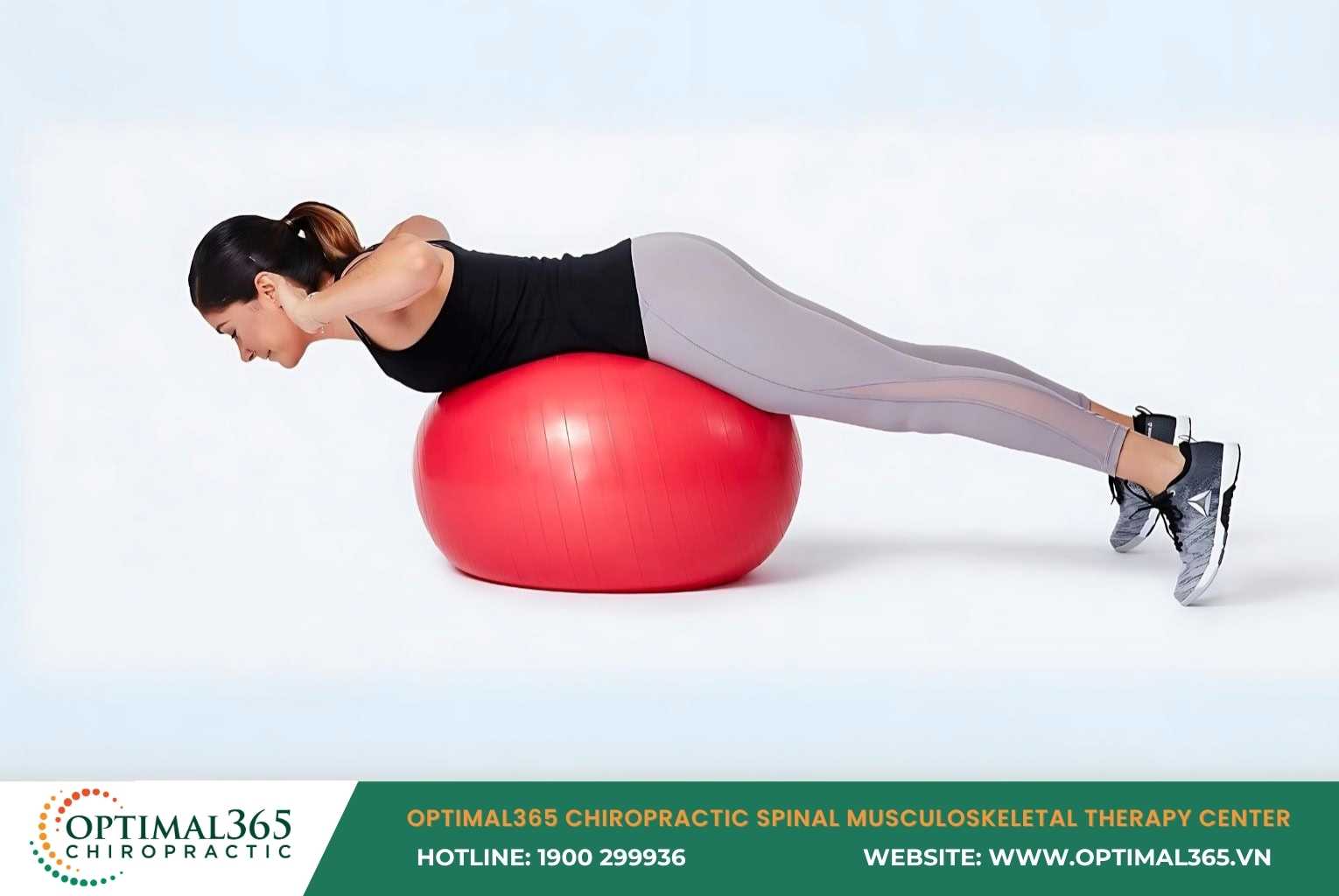
Scoliosis exercises – The prone exercise on a ball is ideal for everyone, especially people with a curved spine
Foam Roller Spine Stretch
This exercise relieves muscle tension and improves spinal health.
- Step 1: Wrap a foam roller in a towel and place it horizontally on a mat, perpendicular to your body.
- Step 2: Position the roller at your waist, between your hips and ribcage.
- Step 3: Extend one leg forward and bend the other knee backward.
- Step 4: Stretch your upper arm until it touches the floor, feeling a stretch in your side.
- Step 5: Hold for 20-30 seconds, repeating 2-3 times.
Benefits: Relieves muscle tension and enhances spinal flexibility.
Benefits of Physiotherapy Exercises for Scoliosis
Physiotherapy exercises for scoliosis strengthen the lower back, improve spinal flexibility, and reduce pain and muscle tension. These exercises are a cornerstone of non-surgical scoliosis treatment, helping to balance muscle forces and align the spine.
Scoliosis is common in children aged 10-16 and older adults due to natural bone degeneration. Causes include congenital factors, developmental disorders, poor posture, degeneration, or injuries. For adults, these exercises help manage symptoms and prevent worsening of the condition.
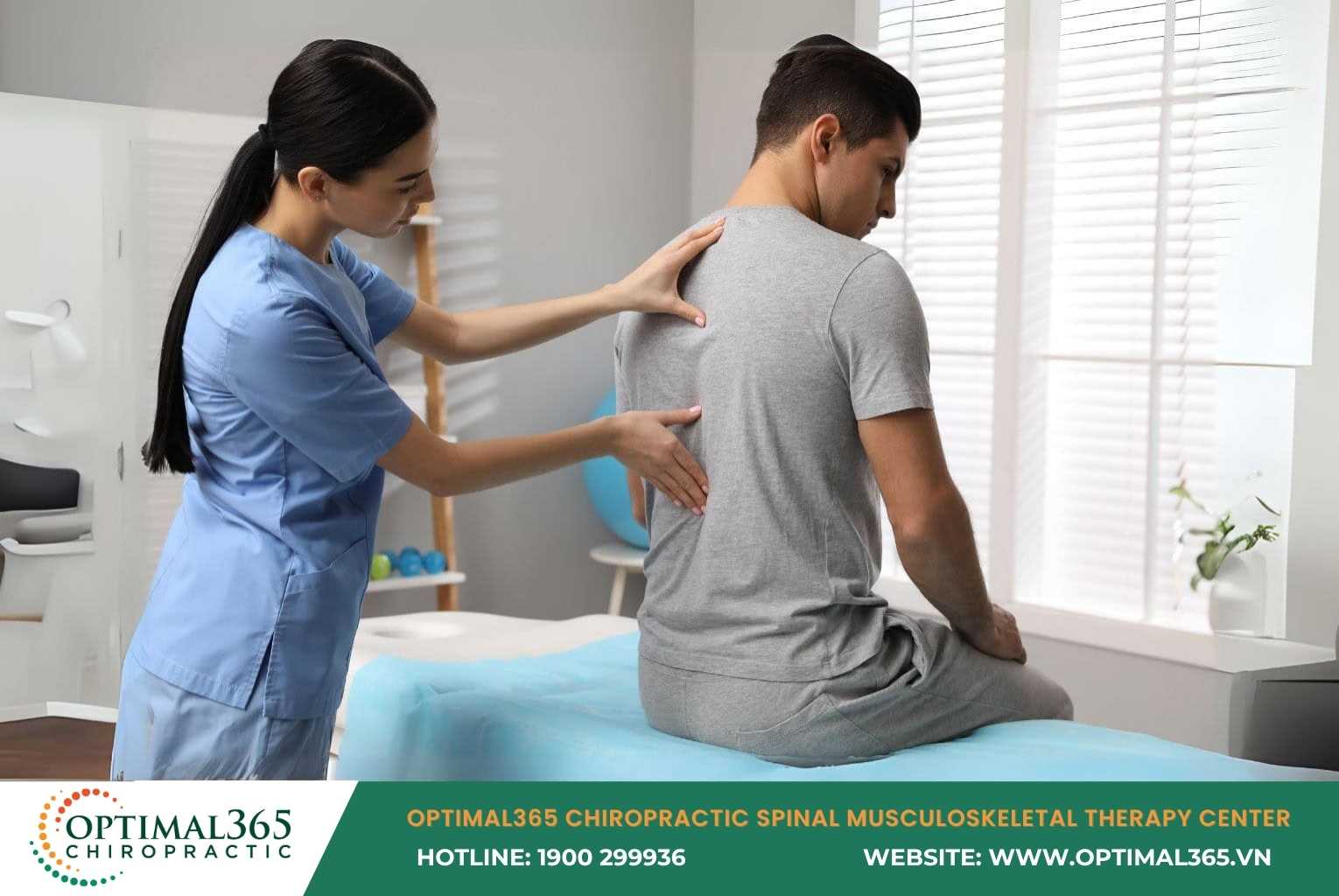
Physical therapy exercises for scoliosis help reduce back pain and muscle tension
Precautions When Performing Scoliosis Exercises at Home
When practicing physiotherapy exercises at home, avoid high-impact activities like soccer, intense yoga stretches, or excessive jumping, as they may worsen scoliosis. Gentle exercises can reduce pain and slow progression, but always consult a doctor before starting.
For severe cases, a doctor may recommend a brace. Consult a specialist for an accurate diagnosis and tailored treatment plan to prevent further injury and improve outcomes.
Optimal365 Chiropractic – Your Trusted Scoliosis Treatment Center
Optimal365 Chiropractic is a leading provider of non-invasive scoliosis treatment, offering solutions without injections, medications, or surgery. Our team of experienced chiropractors, with over 20 years of expertise from the U.S., specializes in advanced conservative treatment techniques for spinal health.
We provide personalized treatment plans, combining physiotherapy exercises with lifestyle advice to help patients improve their condition and maintain spinal health. Contact Optimal365 Chiropractic today for expert consultation and effective scoliosis treatment.
Reference source:
1. Curtis, L. (2022, June 2). The best exercises for scoliosis—at any age. Health Central. https://www.healthcentral.com/condition/scoliosis/exercises-for-scoliosis
2. Ames, H. (2023, January 12). The 7 best stretches and exercises for scoliosis. Medical News Today. https://www.medicalnewstoday.com/articles/325385
3. WebMD Editorial Contributor. (2020, November 19). Best exercises for scoliosis. WebMD. https://www.webmd.com/back-pain/best-exercises-scoliosis
4. Jex-Eco Pharma. Cong vẹo cột sống là một biến dạng bất thường của cột sống, có thể nhìn thấy độ cong từ bên này sang bên kia lệch đi quá lớn so với bình thường.
5. Gallivan, T. 6 bài tập hỗ trợ chữa vẹo cột sống đơn giản mà hiệu quả. ACC. https://acc.vn/6-bai-tap-ho-tro-chua-veo-cot-song-don-gian-ma-hieu-qua/



